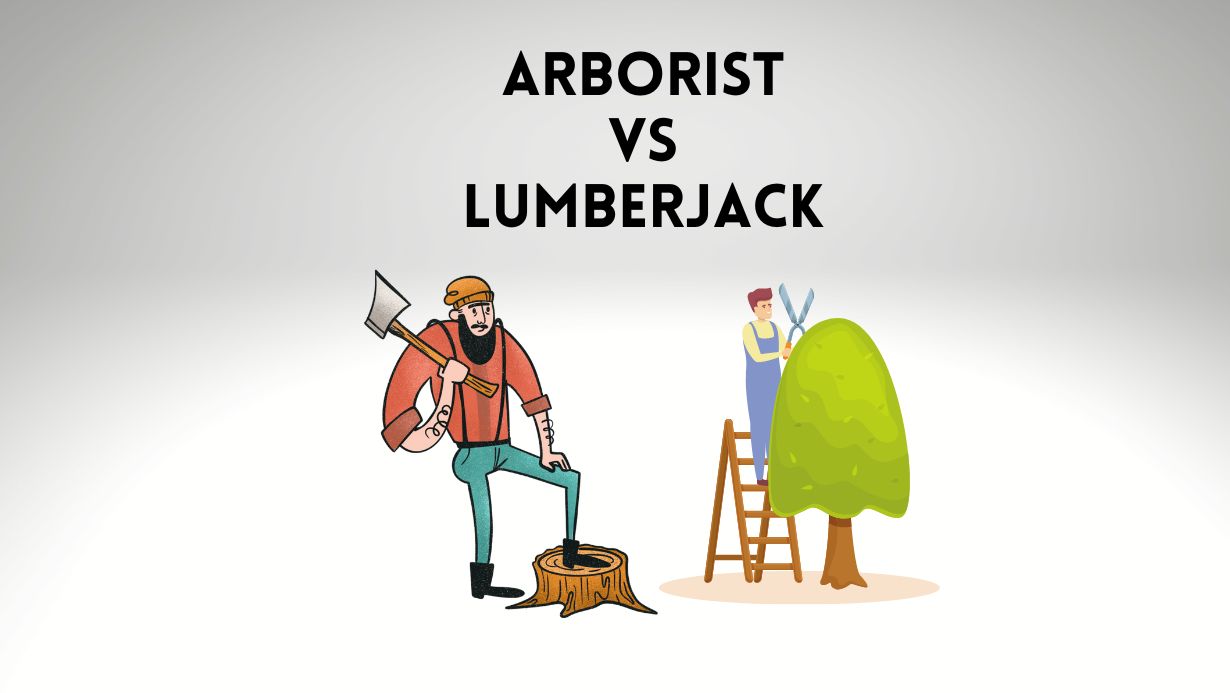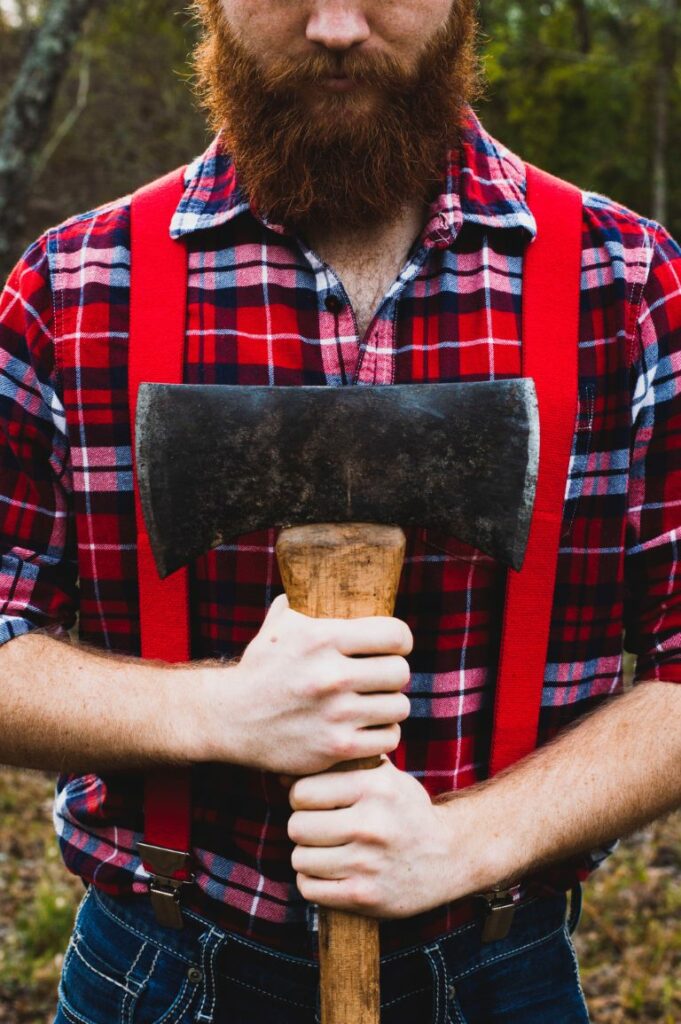
Arborists and lumberjacks are both occupations that involve working with trees. However, there are some key differences between the two professions. For one, arborists focus on the care of trees, while lumberjacks focus on the harvest of timber. Arborists are trained in the science of trees and tree care.
They use this knowledge to diagnose problems and provide solutions that will keep trees healthy. Lumberjacks, on the other hand, are trained in the felling and processing of trees. So, if you’re looking to work with trees, which occupation should you choose? It depends on what you’re interested in and what you hope to achieve. In this blog post, we will compare and contrast these two occupations to help you make a decision.
What is an Arborist?
An arborist is someone who specializes in the care of trees. They are knowledgeable about the different species of trees and how to properly care for them. Arborists typically have a degree in horticulture or a related field.
What is a Lumberjack?
Lumberjacks are those who fell trees and harvest lumber. They generally work in forestry or logging operations.
Lumberjacks need to be physically strong and skilled in the use of axes and other tools.
Lumberjacks typically use large axes to fall down trees, and may also use saws to cut the tree into more manageable pieces. In some cases, they may also use explosives.
Lumberjacks typically work in forests, and their work is essential for the forestry industry. Lumberjacks are often employed by logging companies, and they may also work independently.
The work of a lumberjack is physically demanding, and it can be dangerous. Lumberjacks must be skilled in using their tools and must be aware of their surroundings at all times to avoid accidents.

What is a Lumberjill?
A lumberjill is a woman who fells trees and does other forestry-related work. Lumberjills were first employed during World War II when many men were away fighting and there was a need for workers in the timber industry. Today, lumberjills make up a small percentage of the workforce in the forestry industry, but they play an important role.
Lumberjills use a variety of tools to fell trees and do other forestry work, including chainsaws, axes, and saws. They also use their knowledge of forest ecology to plan and manage forests. In addition to felling trees, lumberjills may also be responsible for planting trees, maintaining trails, and fighting fires.
The term “lumberjill” is sometimes used interchangeably with “forest ranger” or “arborist,” but there are some differences between these professions. Lumberjills typically work in forests, while arborists typically work in urban areas. Forest rangers are responsible for managing and protecting forests; they may also do some tree-felling themselves, but this is not their primary focus.
Which Profession is Right for You?
There are many different types of tree care professionals, and it can be hard to decide which one is right for you. Here is a comparison of two of the most popular tree care professions: arborists and lumberjacks.
Arborists are tree care specialists who focus on the health and well-being of trees. They use a variety of techniques to promote the growth and health of trees, and they often work with other professionals to ensure that trees are properly cared for.
Lumberjacks are tree care professionals who focus on the removal of trees. They use a variety of tools and techniques to fill trees, and they often work with other professionals to ensure that the felled trees are properly processed.
Both arborists and lumberjacks play an important role in tree care, but they have different focus areas. If you’re not sure which type of tree care professional is right for you, consider your needs and objectives before making a decision.
The Difference Between Arborists and Lumberjacks
The main difference between arborists and lumberjacks is the type of tree they fell. Arborists typically fell small, ornamental trees while lumberjacks fell large, timber trees. Both occupations require a high level of skill and precision.
Arborists are tree care specialists who prune, fertilize, and otherwise care for trees. They often work in residential or urban areas where aesthetic appeal is important. Lumberjacks are logging professionals who fell trees for the timber industry. They usually work in rural areas where there are fewer restrictions on land use.
Both arborists and lumberjacks must have a thorough knowledge of tree biology and be skilled in the use of cutting tools. However, their day-to-day tasks are quite different. Arborists typically work alone or in small teams while lumberjacks often work in larger crews. And while both occupations can be dangerous, lumberjacking is generally considered to be more hazardous than arboriculture.
Pros and Cons of Being an Arborist or Lumberjack
Working as an arborist or lumberjack can be a physically demanding and dangerous job. However, there are also many benefits to these careers, including being outdoors and working with your hands. Here is a comparison of the pros and cons of being an arborist or lumberjack:
PROS:
-Can be a very physical and active job, which can be beneficial for someone who enjoys being outdoors and being active.
-Can be a very satisfying job, knowing that you are helping to care for trees or harvest lumber that will be used in construction projects.
-May have the opportunity to work independently or with a team, depending on the company you work for.
-Can offer good pay and benefits, especially if you have experience and/or certification in this field.
CONS:
-The work can be physically demanding and challenging, which may not be suitable for everyone.
-There is a risk of injury when working with heavy machinery or climbing trees.
-The hours can be long and irregular, depending on the season and weather conditions.
Job Opportunities for Arborists and Lumberjacks
The demand for arborists is on the rise as more and more homeowners and businesses are looking to invest in tree care. As an arborist, you can expect to find work in a wide variety of settings, from small residential properties to large commercial properties.
There is also a growing demand for arborists in the logging industry, as they are needed to help fell trees and haul them out of forests.
Lumberjacks are also in high demand, as the logging industry continues to grow. Lumberjacks typically work in forests, felling trees and then transporting them to sawmills or other processing facilities. Some lumberjacks also work in tree farms, where they plant and manage trees.
Is Arborist A Hard Job?
Arborists are tree care professionals who manage the health and well-being of trees. They are knowledgeable in the use of a wide range of tools and techniques to care for trees, including pruning, cabling, and bracing.
Arborists also provide consultation services to landowners, developers, and municipal officials on matters pertaining to tree health and land management.
So, is arborist a hard job? It can be physically demanding at times, but it is also very rewarding. Those who choose to pursue a career in arboriculture often do so because they have a deep love for trees and care about their long-term health and sustainability.
Is Lumberjack A Hard Job?
Lumberjacks are often portrayed as tough, burly men who work in the woods all day. While it is true that lumberjacks do work in the forest, and they are often muscular and strong, the job is not as difficult as it may seem. In fact, many people who work as lumberjacks say that it is one of the most enjoyable jobs they have ever had.
The main reason why lumberjacking is not a hard job is because of the modern technology that is used. Lumberjacks no longer have to fell trees with an axe; they can use mechanized saws to do the job quickly and efficiently. Additionally, logging trucks and other vehicles make it easy to transport logs out of the forest.
Of course, working in the forest can be dangerous, and there are some risks associated with being a lumberjack. However, these dangers are typically overstated, and most lumberjacks take precautions to avoid them. Overall, working as a lumberjack is not a difficult or dangerous job.
What Are The Four Types Of Lumberjacks?
There are four types of lumberjacks: tree fallers or high riggers, buckers or sawyers, skidders, and loaders (hauliers or carriers.)
Tree fallers or high riggers cut down trees with a chainsaw. They cut a notch in the tree trunk and then make a back cut. The tree falls in the direction of the back cut.
Buckers and sawyers use a chainsaw to cut logs into manageable pieces. They cut logs into sections that are easier to transport.
Skidders attach logs to a cable and drag them out of the forest. They move the logs from where they were cut to where they will be processed.
loaders (hauliers or carriers) load logs onto trucks or trains. They use machinery to lift and stack the logs onto vehicles for transport.
Conclusion
It’s clear that there are some key differences between arborists and lumberjacks. Arborists are more focused on the health of trees, while lumberjacks are more concerned with felling them. Arborists need to be skilled in tree pruning and removal, while lumberjacks need to be experts in cutting down trees.
Both jobs require a lot of physical strength and stamina, but arborists also need to be knowledgeable about tree care. If you’re interested in working with trees, then you’ll need to decide whether you want to focus on their health or their destruction.
